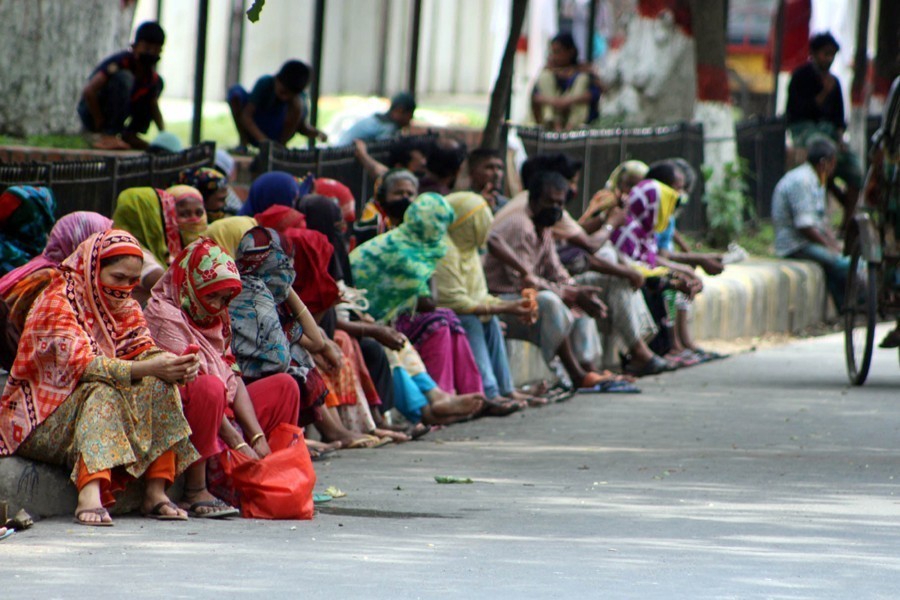The government has finally decided to lift the lockdown from August 11 for obvious reason-the overriding economic necessity.There was of course pressure from the industry, especially, the readymade garment (RMG) sector, as they have the buyers' deadlines to meet. There were also compulsions arising from the condition of those who depend on daily earnings. In fact, the economy is not in a position to feed the jobless millions indefinitely. And the mechanism of direct cash transfer to the neediest is yet to be foolproof. So, it is hard to ensure cent per cent efficiency of the channels being used to reach the government handouts to the disadvantaged.
A study on the pandemic-inflicted pauperisation done in March this year found that 24.50 million (14.74 5 per cent of the population) people continued to be among the new poor despite the fact that the economy did start to recover early in FY 21.
This figure, however, is smaller by 6.20 million than the number of people who slipped into poverty following the first wave of the pandemic (30.70 million, i.e., 22 per cent of the population) in FY20. That is to say that until March this year, a large chunk of the new poor created during the first wave was yet to come out of poverty. But the second spate of the pandemic of a new variety, the Delta variant that have been raging through the country with a vengeance since March has dashed the hope of full recovery of the economy and with it the prospect of the rest of the new poor to come out of poverty.
This new poor together with those already in existence (20.50 per cent of the population which is about 34 million) since the pre-pandemic time have further worsened the poverty situation both in absolute and relative terms.
Consider the dilemma the policymakers are in.
At the moment, reports on daily fatalities from the pandemic are very disconcerting. Worse yet, so far there is also no sign of the positivity rate calming down. Ideally, such a situation warrants imposition of strict restrictions on the movement of people and transports. But for all practical purposes that does not look like a viable option. The only other ways left are the good old practice of health protocols, especially, wearing facemasks and launching full-scale vaccination programme. Though the public's attitude towards health rules including facemask-wearing is rather lackadaisical, they look very enthusiastic about getting the Covid-19 jab. So, all is not after all lost on the recovery front. Nationwide vaccination is now the best recourse left to both keep the pandemic's spread at bay as well as put the economy back on track.
At a recent seminar, the Dhaka Chamber of Commerce and Industry (DCCI) president, Rizwan Rahman, informed that 2.2 million people have lost their jobs as the business is passing through a very depressing phase.
Agriculture which played the role of a saviour during the first pandemic shock in FY 20 by virtue of its having registered the highest ever growth rate at 4.59 per cent, is again on the decline. However, though sluggish, the industry sector demonstrated a moderate growth of 6.12 per cent in the immediate past FY 21. The service sector, too, has been recovering at a 5.6 per cent growth rate and that was not bad compared to the 4.6 per cent that it dipped to in FY 20. As it has become clear from the views expressed by the business leaders at various forums, trade and industry should be allowed to run as usual, come rain or shine. The mood of the working people is also not different. To cut the long story short, it is the question of livelihood that took the centre stage when it came to choosing between options in dealing with the pandemic.


